 On the Fox Roads by Nghi Vo
On the Fox Roads by Nghi Vo Format: ebook
Source: supplied by publisher via Hugo Packet
Formats available: ebook
Genres: fantasy, historical fantasy, urban fantasy
Pages: 38
Published by Tor Books on October 31, 2023
Purchasing Info: Author's Website, Publisher's Website, Amazon, Barnes & Noble, Kobo
Goodreads
A new novelette from Hugo Award-winning author, Nghi Vo!
While learning the ropes from a crafty Jazz Age bank robber, a young stowaway discovers their authentic self, a hidden gift, and that there are no straight lines when you run the fox roads. . .
My Review:
Unlike the popular image of the infamous Bonnie and Clyde, “Chinese Jack” and “Tonkin Jill” didn’t ENTER banks with guns blazing. That didn’t mean they didn’t EXIT that way, but the guns weren’t the point.
Jack and Lai were merely following the rule laid down by their contemporary Willie Sutton, they robbed banks because that’s where the money was. Even if the kind of small-town banks that the Chinese duo robbed had a lot less of the green stuff and a lot more of other kinds of paper than either of the robbers would have liked.
That’s where the third member of this duo turned trio enters the picture, a young Chinese-American girl who stows away in their getaway car intending to steal back the deed to her parents’ store from one of the “Jack and Jill’s” earlier scores.
A seemingly magical deed that will re-open the store as soon as the deed is laid down on the ground it belongs to.
The question is whether that stowaway wants to go back to belonging to it, to being the girl their parents want them to be, prim, proper and most of all – obedient – or whether that girl wants to undergo more than one transformation – robbing banks, driving getaway cars, getting to see the big, wide world, living as a man instead of the woman that fate originally intended.
All things are possible on the magical, mysterious, ever-changing fox roads that travel no known path and go in no known direction except for the will and the whim of anyone who is on the run from a hard chase and desperate enough to drive fast and trust to fate.
Escape Rating A: This is one of those stories where my only complaint is that I wanted just a bit more than I got. Every single bit of this one is terrific, but I wish it had qualified as a Hugo nominee in the Novella category (between 17,500 and 40,000 words) instead of as the Novelette it is (between 7,500 and 17,500 words). Not that I actually WANT more options in the Novella category because it’s going to be a really hard choice for me.
On the Fox Roads is one of those book baby situations, where it feels like it owes some of its DNA to several books I’ve read – and probably more that I haven’t – but at the same time is still a thing of itself meaning that the blend creates something new and marvelous.

In this particular case it reads like it owes something to, first of all, the real Bonnie and Clyde, Bonnie Parker and Clyde Barrow, both in the way that Jack and Lai operate and in the setting, small-town America during the Great Depression just as Prohibition is about to change everything.
But the story also has a bit of The Fox Wife by Yangsze Choo in that one of the characters is a fox masquerading as a human, who is someone with a somewhat different set of morés and values than the human narrator and the fox’s human partner Jack.
And then there’s that third element, the fox roads themselves, which read a lot like the roads to alternate realities traveled by the magical muscle car in Max Gladstone’s Last Exit.
Those impressions were what I brought into this story, what I got while I was reading it was considerably more, as the narrator has the opportunity to try out a much different life than they thought could possibly be available to them as a young Chinese-American woman in racially-stratified 1930s America.
The way that the magic mixed into the heady brew of the story and swept it off down mysterious roads and sometimes equally mysterious and magical cities blended the whole delicious melange into something delightful and unexpected and yes, magical.
To the point where I’m oh-so-grateful that this got nominated for the Hugo, because I’m not much of a short fiction reader and probably wouldn’t have found this otherwise. But I’m glad that I did, even if it does make my Hugo voting that much harder.

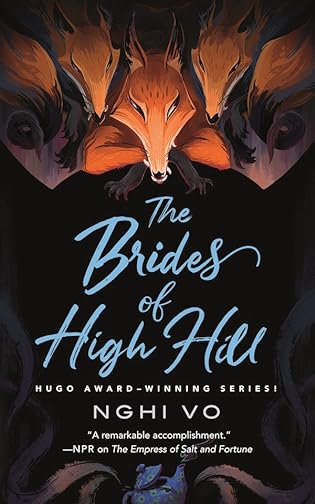 The Brides of High Hill (The Singing Hills Cycle, #5) by
The Brides of High Hill (The Singing Hills Cycle, #5) by 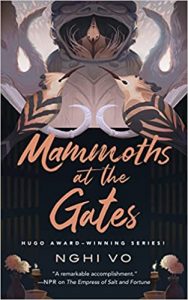 When we first catch up with Cleric Chih as they are accompanying bride-to-be Pham Nhung and her family on their trip to make the final negotiations for Pham Nhung’s marriage to the older and much wealthier Lord Guo, the reader has the sense that they remember when Chih met Nhung at the gates of the Singing Hills Abbey back in the previous book,
When we first catch up with Cleric Chih as they are accompanying bride-to-be Pham Nhung and her family on their trip to make the final negotiations for Pham Nhung’s marriage to the older and much wealthier Lord Guo, the reader has the sense that they remember when Chih met Nhung at the gates of the Singing Hills Abbey back in the previous book, 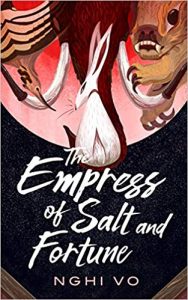 Escape Rating A-: From the very first book in the
Escape Rating A-: From the very first book in the 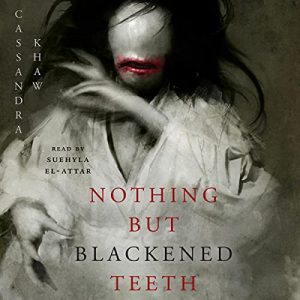 At the very beginning of The Brides of High Hill, Cleric Chih is remembering his late mentor, Cleric Thien, and an occasion where Thien told Chih that “Everything starts with a story,” and a very young and not yet cleric Chih asks, “But what does that mean?”
At the very beginning of The Brides of High Hill, Cleric Chih is remembering his late mentor, Cleric Thien, and an occasion where Thien told Chih that “Everything starts with a story,” and a very young and not yet cleric Chih asks, “But what does that mean?” Into the Riverlands (The Singing Hills Cycle, #3) by
Into the Riverlands (The Singing Hills Cycle, #3) by 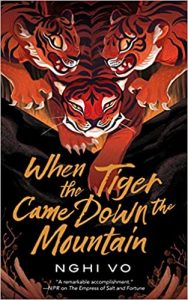 Escape Rating A+: At first, Into the Riverlands seems as if it’s a play on the Canterbury Tales, with Cleric Chih taking the place of Geoffrey Chaucer himself (who, come to think of it, by certain definitions was himself a ‘cleric’). Into the Riverlands is a journey, and every person in the party has at least one story to tell. It’s Chih’s duty to record those stories – not to become a part of one themselves.
Escape Rating A+: At first, Into the Riverlands seems as if it’s a play on the Canterbury Tales, with Cleric Chih taking the place of Geoffrey Chaucer himself (who, come to think of it, by certain definitions was himself a ‘cleric’). Into the Riverlands is a journey, and every person in the party has at least one story to tell. It’s Chih’s duty to record those stories – not to become a part of one themselves.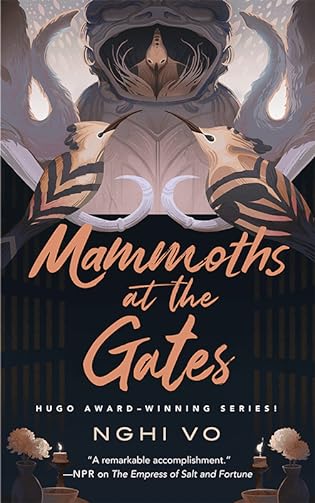 Mammoths at the Gates (The Singing Hills Cycle, #4) by
Mammoths at the Gates (The Singing Hills Cycle, #4) by  It’s also a heartbreakingly beautiful tale of a truth that sets no one free, and a love that both transcends and transforms death.
It’s also a heartbreakingly beautiful tale of a truth that sets no one free, and a love that both transcends and transforms death.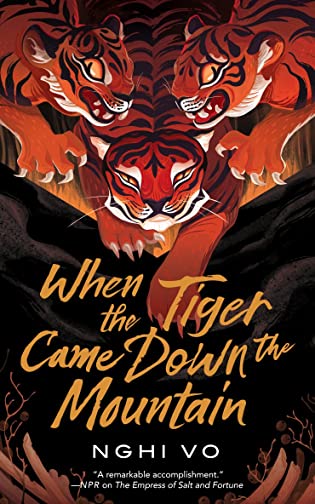 When the Tiger Came Down the Mountain (The Singing Hills Cycle, #2) by
When the Tiger Came Down the Mountain (The Singing Hills Cycle, #2) by 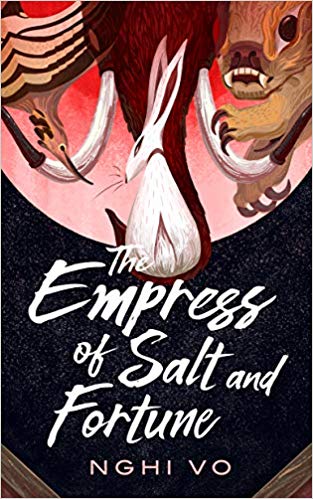 The Empress of Salt and Fortune (Singing Hills Cycle #1) by
The Empress of Salt and Fortune (Singing Hills Cycle #1) by